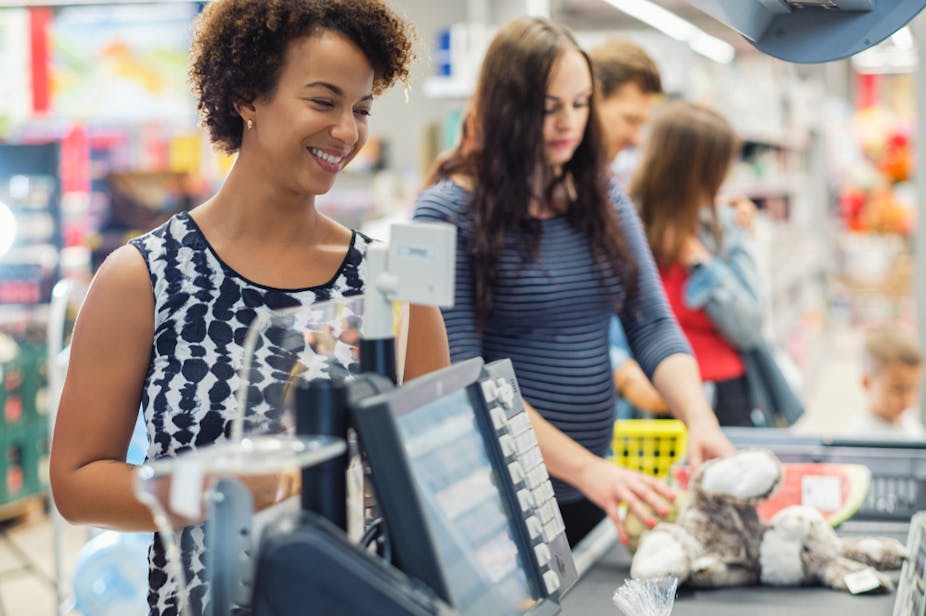The significance of Christmas to retailers’ bottom lines means that updates on trading during this time are always closely watched. This year, the cost of living crisis has weighed heavily on shops. As well as inflation (especially in food), energy, pay and other cost pressures on retailers, transport and postal strikes and the ongoing impact of Brexit also caused concern in the run-up to Christmas 2022 that the retail losers would far outweigh the winners.
But results – particularly among clothing and some non-food categories – have pointed to a more positive picture than anticipated before the festive period. British retail giant Next produced a downgraded estimate of annual profits last autumn, but its Christmas trading update points to strong sales – and in its stores more than on online. Budget store B&M also reported excellent Christmas trading figures as did retailers as diverse as Boots, Greggs, The Fragrance Shop, Card Factory, Seasalt and Oxfam.
Grocery shopping figures for December showed stellar performances from Aldi and Lidl, while Iceland also did well. Market leader Tesco performed strongly and Marks & Spencer produced far better than expected results in both food and non-food. In further good news, independent bookstore numbers are at a ten-year high.
It is early days and there are more retailers to report, of course – certainly, the data for Morrisons and Waitrose showed comparatively poor Christmas sales numbers. Plus, several retailers, including online furniture shop Made and clothing company M&Co, did not survive 2022, while others such as homeware seller Wilko were forced to refinance or had to be rescued like clothing brand Joules and McColl’s, the convenience shop operator that was bought by Morrisons last year.
Read more: How Made.com went from a pandemic-era business superstar to a failed company in just 18 months
Retailer Christmas figures are also unaudited, focus on sales not profit and can cover different dates depending on the retailer. But, in general, results so far have been better than anticipated. This could be because consumers have started to change their habits in the following ways in response to the cost of living crisis.
1. Searching for value
The effects of inflation have caused more consumers to search for value, causing many to switch to discount retailers and own-brand products, which are typically perceived as offering value. Some of the comparative sales increases over Christmas were due to rising prices and thus while spending is up in total, the number of items bought is not.
2. Shop local
The impact of the pandemic, combined with recent transport and postal service strikes have caused a switch to local spending. When pandemic restrictions were in effect, people explored their local areas and used local and independent retailers, something that has continued with working from home. Difficulties accessing some larger towns and cities by public transport and uncertainty over postal deliveries due to strikes has increased the importance of shopping local.
Figures for December show the highest footfall since the pandemic, with a notable bounce on high streets. Online retailing may have had a weaker Christmas boost than previous years because consumers wanted to visit stores, were uncertain about delivery and wanted to shop around for the best bargains.
3. Buying with credit
There is some evidence that people used credit cards and savings to ensure a good Christmas. The slowdown in the housing market, and the desire to reward ourselves during the first Christmas without pandemic restrictions for three years, combined to encourage those who could to make the effort to spend.

With all this changing consumer behaviour, well-run retail businesses that manage their product offerings, supply chains and stock levels to hit the above “sweet spots” for consumer demand did well during Christmas 2022. Those who were less effective or perceived to be less consumer focused, suffered.
But there is also a clear and growing disparity among consumers. There is no doubt that, for many, last Christmas was a good one. But at the same time record numbers of people are in food and fuel poverty, and large numbers are really struggling to cover basics, with consequent effects on health and wellbeing.
A uneven ride ahead
And so, while more positive than expected figures many retailers should be welcomed, they probably mask future problems. Even in its upbeat Christmas results, Next pointed to possible price rises in the coming months and concerns about affordability, as has M&S previously. Sainsbury’s, Greggs and Tesco are among retailers that have recently increased shopfloor wage rates, reflecting a tight labour market but also reacting to the cost of living struggles of their staff.
Among these economic headwinds, however, there are indications that inflation should decline in 2023 and that energy prices may not rise as fast as predicted, or could even fall. The UK may also see an end to recent interest rate rises during this year.
In January 2022, the economy looked fairly stable, but got worse very quickly. Now in January 2023 the hope is that things will improve faster than anticipated. Any gains will be hard won. As the economy continues to adjust to the effects of COVID and Brexit, while also absorbing the cost of living crisis, further change in 2023 will not be spread evenly across all retailers, nor all shoppers.

